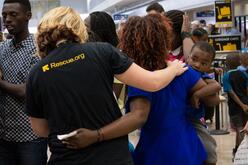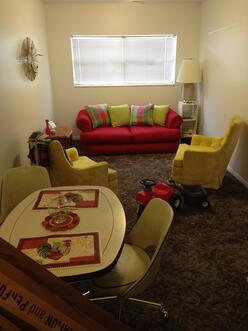Over the next three months, we are going to take a deep dive into the process of refugee resettlement at the International Rescue Committee (IRC) in Salt Lake City. This month, we’ll focus on the basics of initial resettlement, including the process a refugee must undergo to be considered for resettlement in the U.S. and the days leading up to their arrival through the eyes of IRC staff and volunteers in Salt Lake City.

First, a few basics:
A refugee is any person who is unable to return to his or her own country because of a well-founded fear of persecution on account of race, nationality, political opinion, religion, or social group. In order to be considered a refugee by the United Nations High Commissioner for Refugees (UNHCR), an individual must 1) have crossed an international border and be outside of their home country and 2) have faced persecution or have a well-founded fear of persecution, and 3) must be able to prove their identity. Once a refugee has registered with the UNHCR, proving that they meet the criteria above, they wait, often for many years, to be considered for resettlement into a third country, such as the United States.
If a refugee is finally selected for resettlement in a third country, the security vetting process begins—a process that averages 18 to 24 months but can last much longer. This lengthy process is the reason refugees are the most thoroughly vetted and scrutinized group entering the United States. Each individual in the family selected to resettle in the U.S. is interviewed multiple times by six federal agencies, including the Department of Homeland Security and the Federal Bureau of Investigation. In addition to interviews, biometric scans and other identifying information is taken and recorded. After the security vetting process is successfully completed and approved by all agencies involved, refugees attend a cultural orientation specific to the country where they will be resettled. With the orientation complete, the International Organization for Migration (IOM) provides a loan to the family and purchases airfare on their behalf—this loan must be paid back to IOM after the family is resettled.
Once travel arrangements have been made, one of nine resettlement agencies in the U.S., such as the IRC, is selected to receive the refugee family and begins to make arrangements. At the IRC in Salt Lake City, our housing & logistics coordinator secures an apartment for the arriving individual or family to rent and coordinates among staff and volunteers to furnish the family’s first home in the U.S. with donated furniture and supplies.
The Refugee Resettlement Committee (RRC) of the First Unitarian Church, a group of volunteers who have supported the IRC’s efforts in Salt Lake City for more than 20 years, partners to support apartment setups and gathering donations to turn an empty apartment into a home. Joe DuBray, a coordinator for the RRC, says that he and other members of the RRC recognize the dignity and worth of each person, and enjoy this opportunity to serve. “It delivers us a direct experience in terms of what you could call social justice activity, where [we assist in] the improvement in the quality of life of people who have been challenged in very basic things.”

When the day of arrival finally comes, the newly arrived individual or family’s assigned caseworker, volunteers, and any local friends and family go to the airport to greet the family to welcome them to their new home. The caseworker will then take the family to their apartment and provide an orientation to their new living space, describing the basics as needed and discussing the upcoming days and weeks as they settle in. Before the caseworker leaves, they make sure the family enjoys a culturally-appropriate hot meal—the first after a long journey. From that moment, the caseworker will become the family’s advocate for their first two years in Utah, making sure they are connected to available services and programming, such as ESL and job readiness training, to ensure they positively integrate.
The days following a family’s arrival are a whirlwind of activity as the family is enrolled in various programs, makes their way through service intakes and evaluations, and discusses their path to self-sufficiency over the course of the coming months.
Stay tuned to learn more about the next steps a refugee family takes after they first arrive in the U.S. To be the first to receive this update, sign up for our newsletter now>
